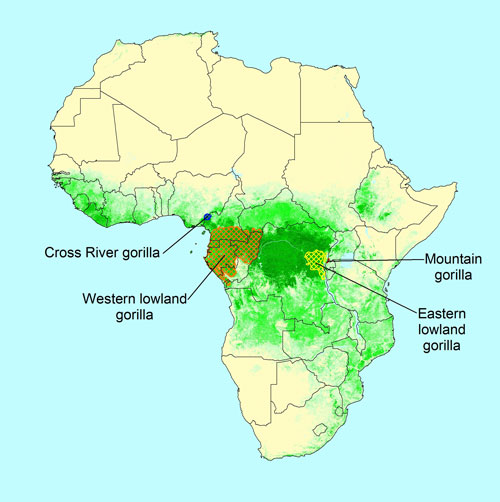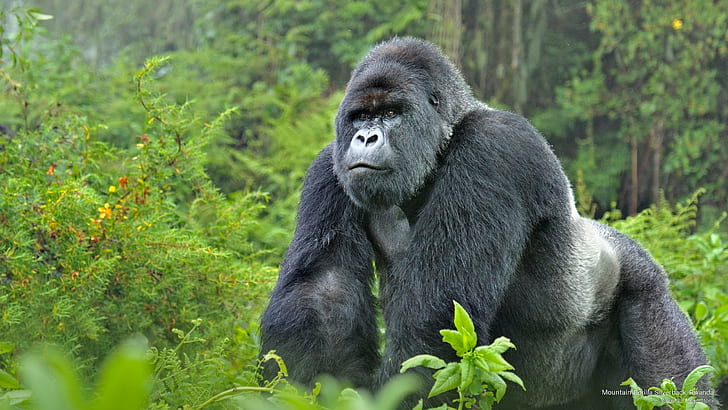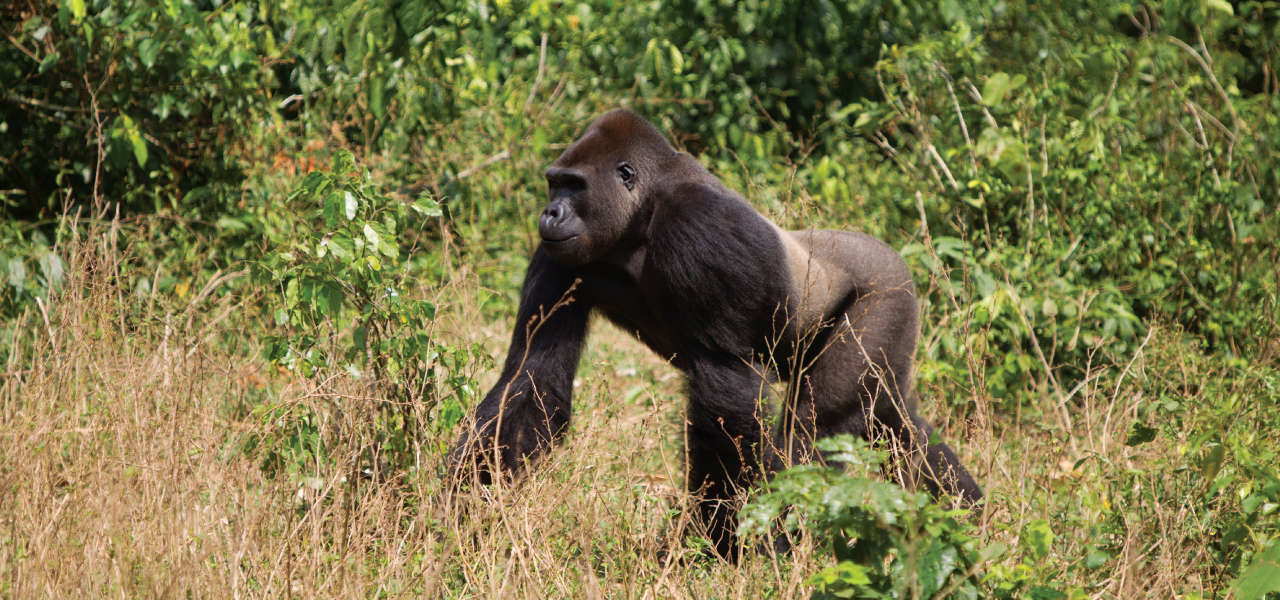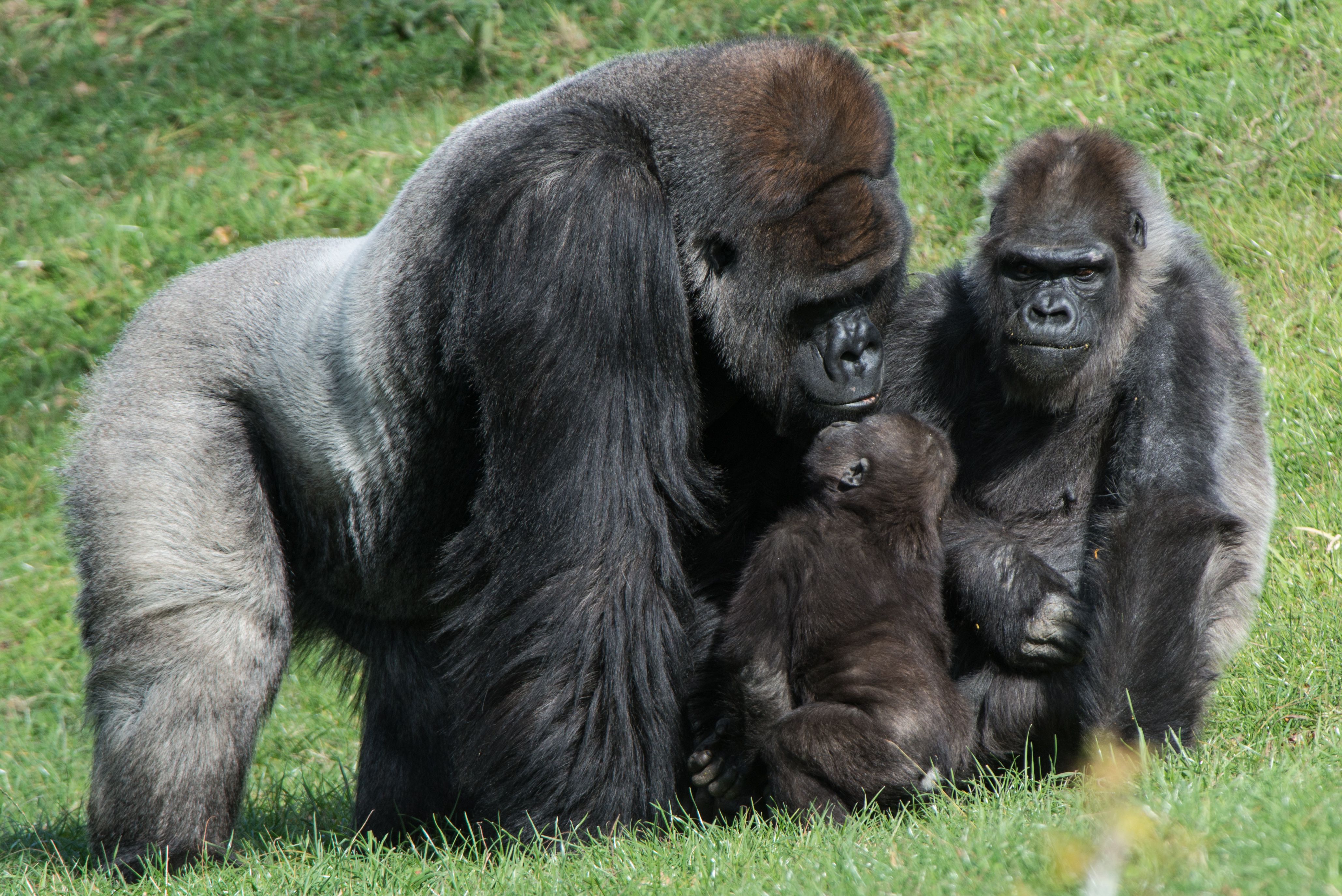STATUS
Critically Endangered


The gorilla is robust and powerful, with an extremely thick, strong chest and a protruding abdomen. Both skin and hair are black. The face has large nostrils, small ears, and prominent brow ridges. Adults have long, muscular arms that are 15-20 percent longer than the stocky legs. Males are about twice as heavy as females and may attain a height of about 1.7 metres (5.5 feet) and weight (in the wild) of 135-220 kg (300-485 pounds). Captive gorillas of both sexes may grow quite fat and hence become much heavier. A wild adult female typically is about 1.5 metres tall and weighs about 70-90 kg.
Gorillas live in stable family groups numbering from 6 to 30. The groups are led by one or two (occasionally more) silverback males that are related to each other, usually a father and one or more of his sons. Occasionally brothers lead a group. The other members are females, infants, juveniles, and young adult males (blackbacks). Adult females join from outside the group, and the young are offspring of silverbacks.
Their diet is vegetarian; that of eastern gorillas includes leaves, stalks, and shoots, but western gorillas eat much more fruit. Gorillas generally dislike water,

STATUS
Critically Endangered

SCIENTIFIC NAME
Gorilla

POPULATION
less than 1,063 left

LENGTH
stand up to 6 feet (1.8 meters) tall.

WEIGHT
160- 310 kgs

HABITAT
RAINFORESTS

Gorillas act as an "umbrella species" for their habitat, helping to protect biodiversity on a larger scale. Their forest habitat is home to numerous other species, many themselves endangered. Protecting gorillas helps protect these other vital plants, animals and insects as well.
Some gorillas in captivity have learned to use sign language to communicate with humans.
Gorillas are one of our closest living relatives, after chimpanzees and bonobos. They share between 95% and 99% of our DNA! Gorillas and chimpanzees walk quadrupedally (on all fours) and use their knuckles to carry the weight of their head and torso.
The main threat to gorillas is people and the associated increasing pressure on the gorilla's habitat. With so few individuals in the wild the mountain gorilla is listed as critically endangered.
Similar to other primates, they are very social animals that live in groups. Life in society helps them to survive. Males protect females and the offspring of the group, and in turn, the dominant male can access the females that are in heat.




